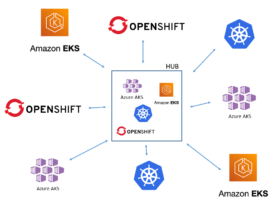Introduction Whether you have already adopted Openshift or are considering it, this article will help you increase your ROI and productivity by listing the 12 essential features including with any Openshift subscription. This is where Openshift shines as a platform when compared to pure Kubernetes engine distributions like EKS, AKS, etc. which are more barebones […]
IBM / Red Hat
DataStage Macros
DataStage has several in-built macros and do not require any arguments. DataStage macros can be used to get information about current job, job control routines, filename and table names, and before/after subroutines and stages belonging to the current job. DataStage ETL Tool: – DataStage is a commonly used ETL tool in the current market. It […]
Perficient’s Eric Walk Named an IBM Champion
IBM has named its IBM Champions for 2023 and for the second year in a row, Eric Walk was named as an IBM Champion. What is an IBM Champion IBM Champions are individuals who possess in-depth knowledge and expertise around IBM products, services, and technology. They are committed to sharing their expertise with others to […]
6 Steps to successful autoscaling on Kubernetes
Introduction One of the big drivers of adopting containers to deploy microservices is the elasticity provided by platforms like Kubernetes. The ability to quickly scale applications up and down according to current demand can cut your spending by more than half, and add a few 9s to your SLAs. Because it’s so easy to setup […]
Kubernetes Multi-Cluster Management – Part 3
Introduction In part I of our Kubernetes multi-cluster management series, we’ve talked about the basics of GitOps and explained why you should really consider GitOps as a central tenet of your Kubernetes management strategy. In part II, we looked at a reference implementation of GitOps using ArgoCD, and how to organize your GitOps repositories for […]
Announcing AWS ROSA Accelerator “Devops-In-A-Box”
Today we’re making our Openshift on AWS (ROSA) accelerator available for everybody to use *free of charge. This solution is the product of years of experience on the ground delivering application modernization on containers to some of the biggest companies in the world. With the release of ROSA (Red Hat OpenShift on AWS) at the […]
Kubernetes Multi-Cluster Management – Part 2
Introduction In Part I of our multi-cluster management series, we’ve introduced GitOps and gone over some of the reasons why you should adopt GitOps for the management of Kubernetes clusters. GitOps is always the #1 thing we set up when starting an engagement and we’ve spent a lot of time perfecting our best practices. Today […]
Review of Industrial IoT Solutions – Part I
Introduction Edge computing and more generally the rise of Industry 4.0 delivers tremendous value for your business. Having the right data strategy is critical to get access to the right information at the right time and place. Processing data on-site allows you to react to events near real-time and propagating that data to every part […]
Kubernetes Multi-cluster Management – Part 1
Introduction With more and more organizations adopting Kubernetes across multiple teams, the need for IT to provide a way for these teams to quickly provision and configure clusters is increasing fast. This is not only true in cloud environments but also at the edge, and from a practical standpoint, adding more clusters can become exponentially […]
AnsibleFest 2022 Wrap Up
Red Hat AnsibleFest 2022 took place October 18-19 showcasing new updates to Red Hat’s automation software. The Ansible Automation Platform is an open-source IT automation tool that automates provisioning, configuration management, application deployment, orchestration, and many other manual IT processes. These capabilities, paired with current updates, improve Ansible’s offerings and give customers with what they […]
Leveraging Red Hat Ansible Automation Platform for Operational Efficiency
Ansible Automation Platform is an open-source IT automation tool that automates provisioning, configuration management, application deployment, orchestration, and many other manual IT processes. Unlike more simplistic management tools, Ansible users (like system administrators, developers, and architects) can use Ansible automation to install software, automate daily tasks, provision infrastructure, improve security and compliance, patch systems, and […]
Understanding Cloud Native and What’s In It for Your Organization
“Cloud Native” is the current buzzword we will hear everywhere in major digital transformation projects currently underway. But what does Cloud Native even mean? Is it worth doing it for your organization? These are questions that pop up when thinking about transforming our workloads in a Cloud Native way. So let us dive in. What […]











